The dawn of a new age has come in space exploration as the James Webb Space Telescope (JWST) switched on and snapped its first images of the universe, confirming what everyone was hoping for: yes, it’s great; yes, the quality of the images is breathtaking; and yes, this will help us understand the universe better than ever before.
But while the images are indeed exciting, something else drew astronomers’ eyes: spectral data.
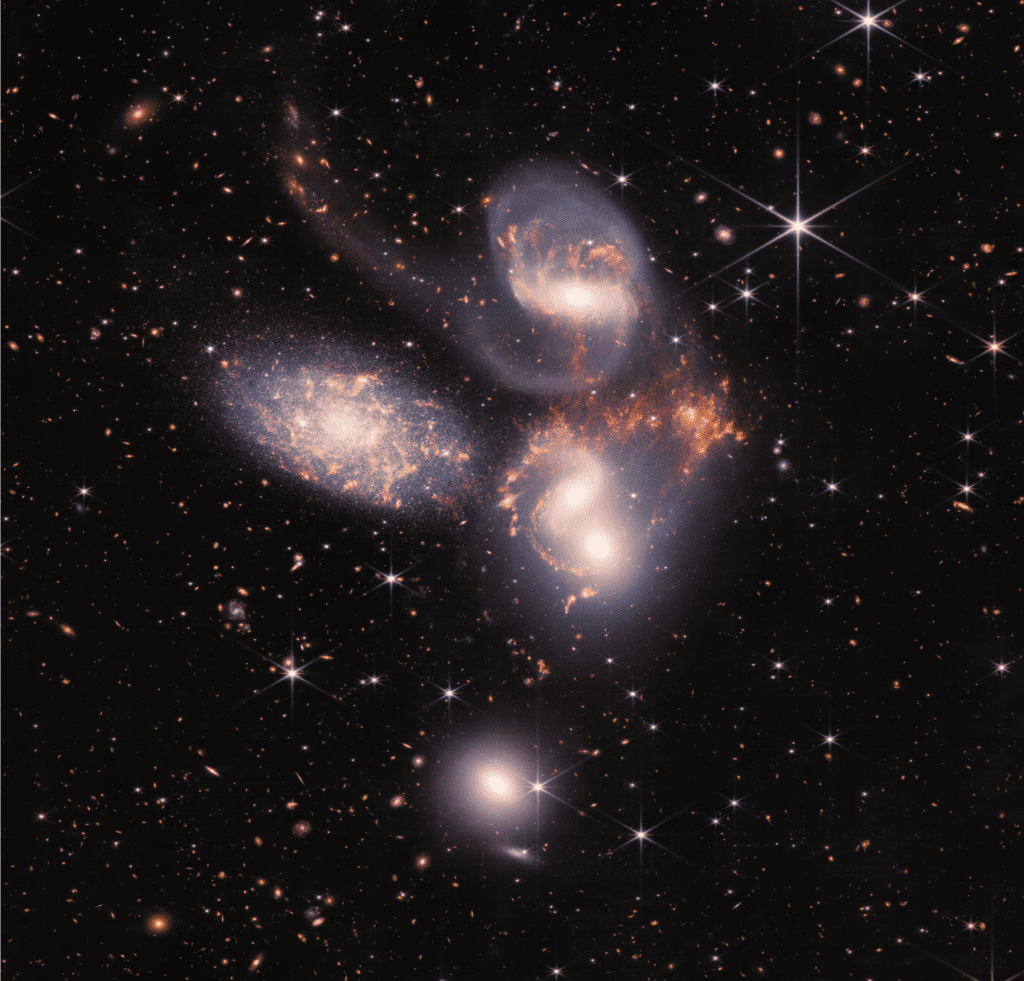

“Today, we present humanity with a groundbreaking new view of the cosmos from the James Webb Space Telescope – a view the world has never seen before,” said NASA Administrator Bill Nelson. “These images, including the deepest infrared view of our Universe that has ever been taken, show us how Webb will help to uncover the answers to questions we don’t even yet know to ask; questions that will help us better understand our universe and humanity’s place within it.
It is, indeed, both exciting and humbling to look at the images NASA released (which are also feature dhere). The pictures offer a tantalizing view of the potential JWST has, and its ability to peer deep into the universe. According to every metric, the JWST is meeting or even exceeding its operational potential.
“I am so thrilled and so relieved,” John Mather, Nasa’s senior project scientist on the mission, told The Guardian. “This was so hard and it took so long. It’s impossible to convey how hard it really was … but we did it.”
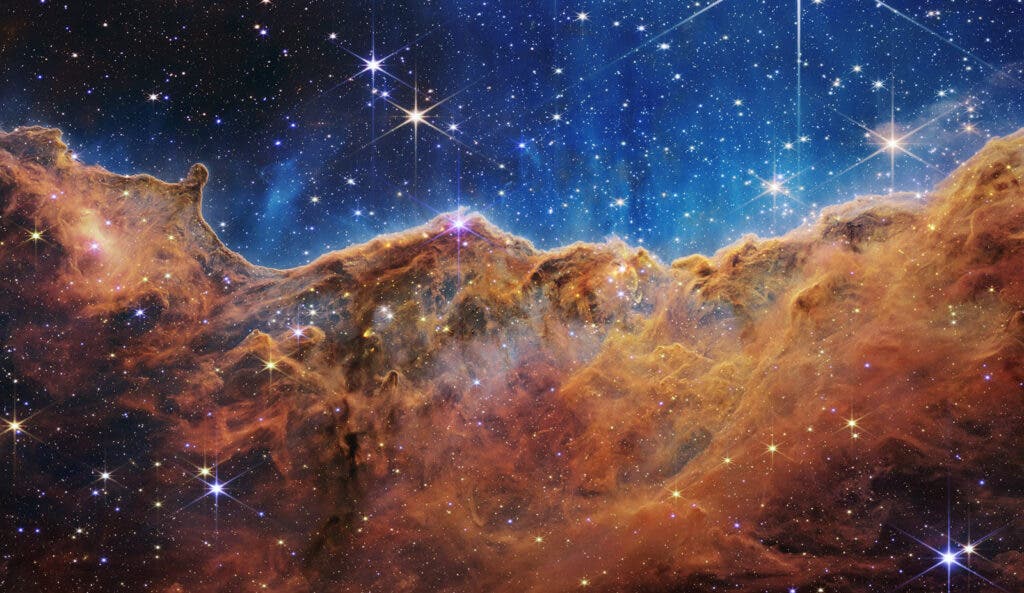

But after the world collectively lifted its jaw off the floor, astronomers focused on something that may have escaped the untrained eye: spectral data.
Light can have different frequencies — a spectrum of frequencies. Unlike the human eye, which picks up on visible light, the JWST can also pick up mid-infrared and near-infrared wavelengths. In addition to cameras, the JWST is also equipped with equipment that can pick up spectral data.
Analyzing this spectral data doesn’t only produce a pretty picture. The stellar spectrum can also reveal many key properties of stars such as their chemical composition, temperature, or mass. Because the universe is expanding, spectroscopy can also show how cosmic objects like galaxies are moving towards or away from us by measuring their Doppler shift.
No doubt, there will be plenty of JWST spectral studies in the future, but already, these first few images are showing their tremendous potential.
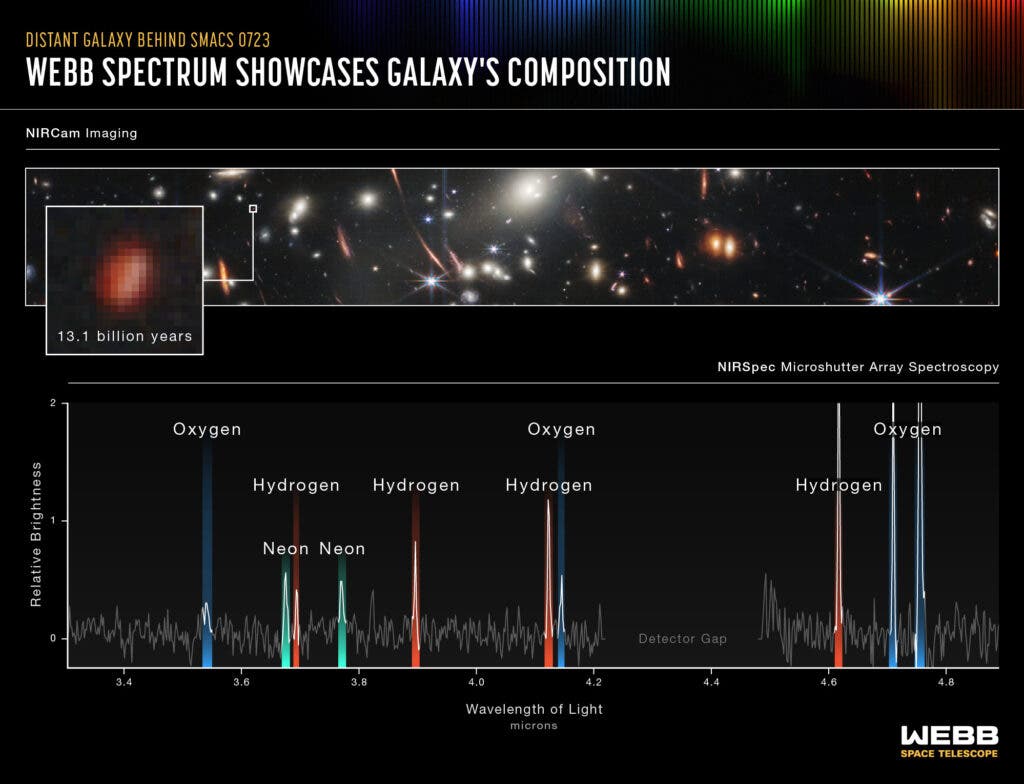
In this image, NASA researchers zoomed in on the area highlighted in the small white box — a blotch of light that lies 13.1 billion light-years away. The spectral data, highlighted by the wiggly line, shows how much light there is at every precise wavelength. This creates a sort of a pattern, and this pattern is a tell-tale sign of various chemical elements: for instance, the four lines marked in blue are a sign of oxygen, and the green-teal ones are a sign of neon.
The fact that this part of the universe has oxygen and neon is already an important indicator because it shows that stars already lived and died there, 13.1 billion years ago (because we’re not seeing this place as it was 13.1 billion years ago).
“The spectra are the astronomer’s equivalent of the DNA swabs. What the galaxies were up to is encoded in their light,” tweeted Jonathan McDowell, an astronomer at the Center for Astrophysics. “The spectrum is like a DNA fingerprint of their history, and we can go all CSI on its ass to figure out what is going on, in far more detail that for the image.”
“So yes, you can do science with the pretty pictures, but often it’s the spectra that really let us tell the story,” the astronomer added.
Other astronomers echoed McDowell, emphasizing just how important this data is. In another example released by NASA, the JWST imaged an exoplanet called WASP-96b, a gas giant about half the mass of Jupiter 1,120 light-years away from Earth, in the constellation Phoenix. The spectrum of light of the planet revealed the distinct signature of water, and the JWST also found evidence of haze and clouds that previous studies of this planet did not detect.
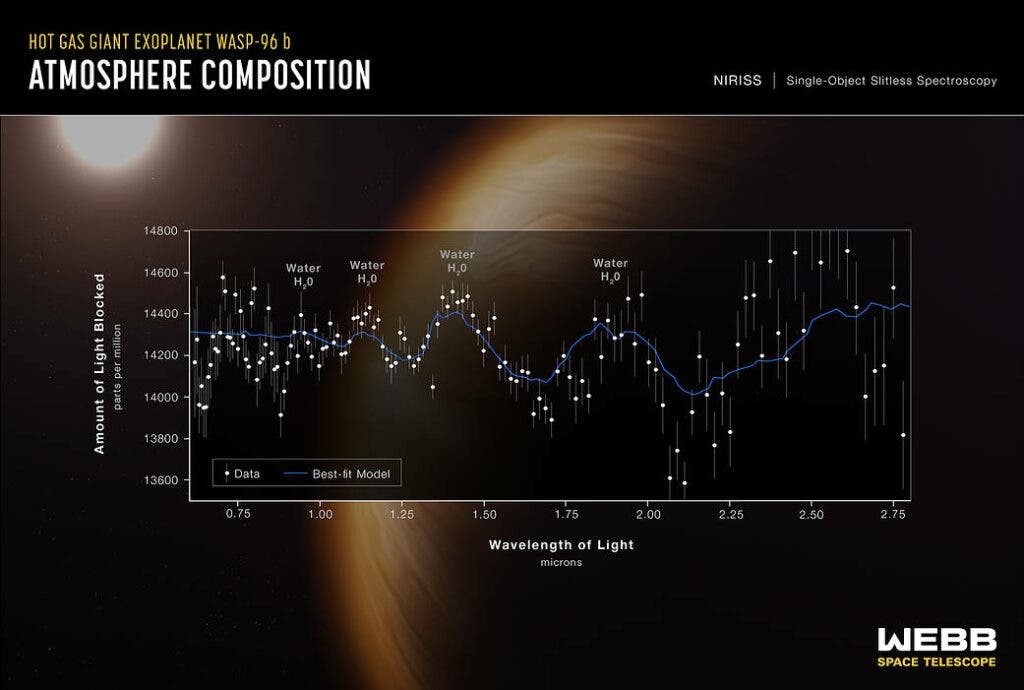
Out telescopes can’t really “see” planets because, unlike stars, planets don’t really produce their own light. Planets are commonly discovered in one of two ways: either through the transit method (when a planet passes in between its star and the Earth, causing a slight dimming in the star’s light) and the radial velocity method (in which the gravity of a planet creates a small wobble in the star, causing it to move ever so slightly).
So basically, astronomers detect planets also by looking at stars and seeing the effects planets have on them. The JWST also didn’t image the planet directly, but it did the next best thing: it looked at the light coming from the star and passing through the planet’s atmosphere.
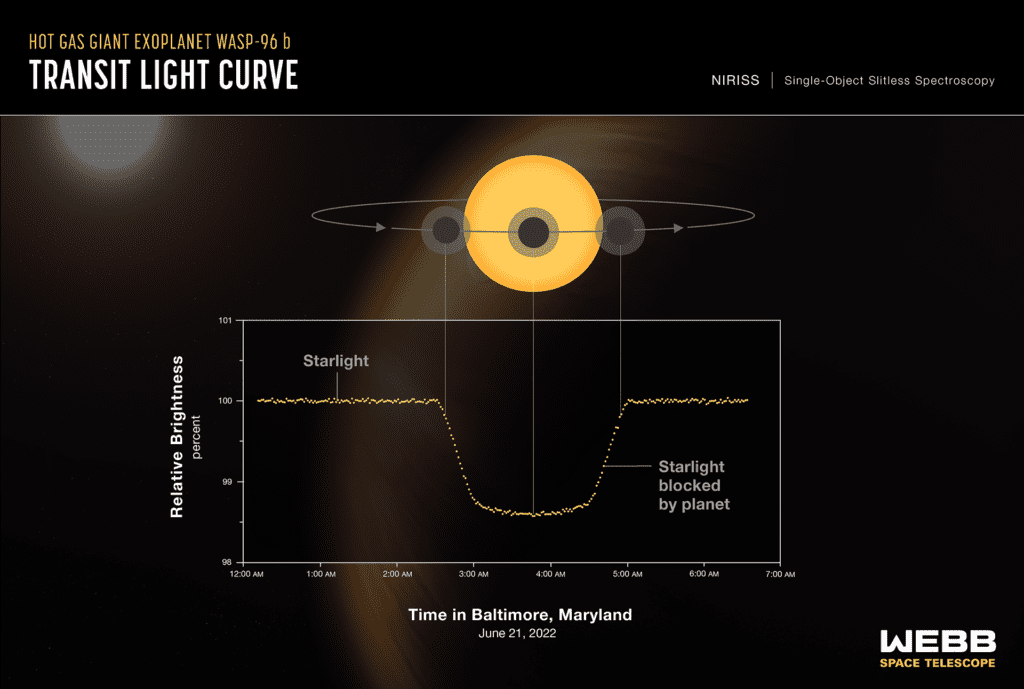
Light passes through the atmosphere of WASP-96b, and the spectrum of this light can reveal the chemical composition of the planet’s atmosphere — yet again, through spectral analysis. This analysis revealed that the planet’s atmosphere is rich in water, and researchers also found evidence of clouds and haze. This is the most detailed spectrum ever imaged on an exoplanet, and the same approach could be used even for potential signatures of life on other planets.
Another thing researchers are really excited about is the JWST’s ability to peer farther than Hubble. While Hubble uses ultraviolet light, visible light, and a small slice of infrared, the JWST is optimized for infrared, which enables it to “see” farther away without light being obscured by dust and gas in deep space. Notably, there is still a bit of overlap between the two telescopes in a part of the visible light spectrum.
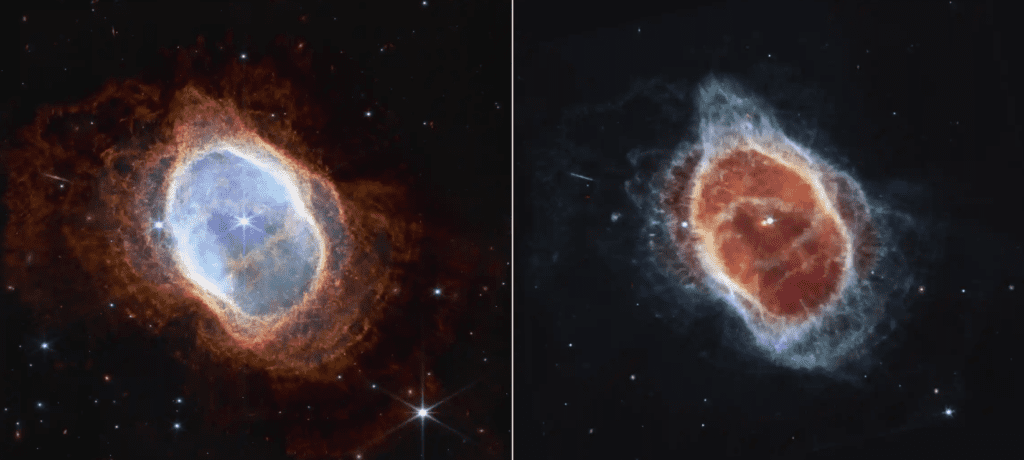
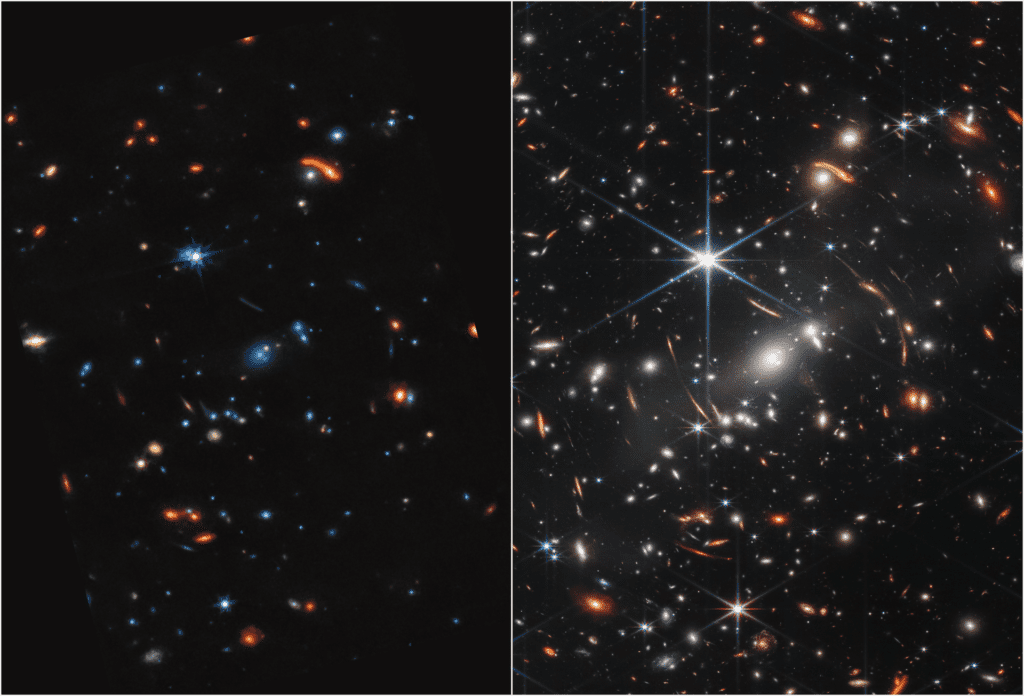
There is incredibly much the telescope can be used for, and teams from all around the world are already applying for time on the JWST, so we can expect more findings from it very soon.
The JWST’s official mission science goals (and what we can expect it to focus most on) are:
- Searching for the first galaxies or luminous objects that formed after the Big Bang.
- Determining how galaxies evolved from their formation until the present.
- Observing the formation of stars from the first stages to the formation of planetary systems.
- Measuring the physical and chemical properties of planetary systems and investigate the potential for life in those systems.






